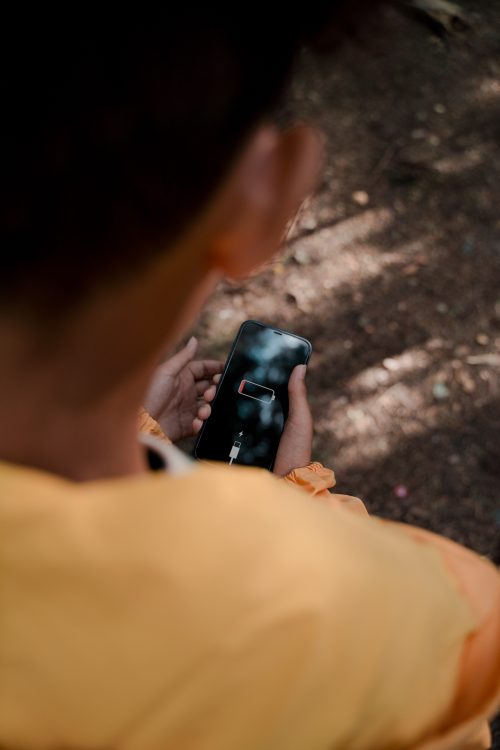Introduction

Teenage years are a time of immense change, growth, and, often, anxiety. While some anxiety is a normal part of adolescence, the increasing rates of clinical anxiety in teenagers are concerning. This guide aims to explore the alternative choices available for managing anxiety, including pharmaceutical options and lifestyle interventions, and delves into the growing body of evidence surrounding the use of cannabis as both a short-term and long-term treatment option.
Definitions
- Clinical Anxiety: This differs from normal stress by its intensity, duration, and/or its being disproportionate to the current situation. It often manifests with symptoms that include excessive worry, fear, or panic, which could interfere with daily activities. Clinical anxiety often necessitates medical treatment for effective management.
- Clinical Depression: A mental health disorder characterized by persistently low mood and a severe lack of interest in activities. Clinical depression may manifest alongside anxiety disorders, complicating the symptom profile and treatment approaches. Both may require a multi-faceted treatment plan that could include medication and therapy.
Alternative Choices for Managing Anxiety
- SSRIs (Selective Serotonin Reuptake Inhibitors): Commonly prescribed for both depression and anxiety. However, they often require several weeks to become fully effective.
- Benzodiazepines: Provide quick relief from anxiety symptoms but come with a high risk of dependence.
- Cigarettes: Some teens turn to smoking as a coping mechanism, but it comes with severe health risks and is not an effective treatment for anxiety.
- Vaped Nicotine: Often misconceived as safer than smoking, vaped nicotine is addictive and not a solution for anxiety management.
- Junk Food and Candy: Comfort eating is common among anxious individuals but is unhealthy in the long term.
- Talk Therapy: Cognitive Behavioral Therapy (CBT) and other talk therapies have proven effective for treating anxiety disorders.
- Exercise: Physical activity releases endorphins, which can help relieve symptoms of anxiety.
- Screen Watching: Some may find solace in digital escapism, although excessive screen time has its drawbacks, including contributing to anxiety.

Key Findings on Cannabis and Anxiety
Immediate Need for Relaxation
Cannabis, particularly strains rich in CBD, has shown promise for immediate relaxation and anxiety relief. CBD interacts with the serotonin receptors in the brain, which helps regulate mood and stress (Blessing et al., 2015). However, strains high in THC can sometimes exacerbate anxiety and should be used cautiously.
Longer-Lasting, Preventative Effects
Several studies have suggested that the endocannabinoid system plays a vital role in mood regulation and stress response. Cannabinoids like CBD have shown potential as a long-term treatment option for anxiety disorders by acting on this system (Gunduz-Cinar et al., 2013).
Risks and Limitations
It’s important to note that while cannabis offers potential benefits, self-medication without medical supervision is not recommended. Cannabis use in teenagers may lead to adverse developmental effects, and the legality of its use varies by location.
Chart: Comparative Analysis of Alternative Choices
| Alternative Choices | Short-term Efficacy | Long-term Efficacy | Side Effects | Legal Restrictions |
|---|---|---|---|---|
| SSRIs | Low | High | Nausea, Fatigue, Weight gain | Prescription Required |
| Benzodiazepines | High | Low | Dizziness, Dependence | Prescription Required |
| Cigarettes | Low | Low | Lung Cancer, Heart Disease | Age Restricted |
| Vaped Nicotine | Low | Low | Lung Issues, Addiction | Age Restricted |
| Junk Food/Candy | Low | Low | Obesity, Diabetes | None |
| Talk Therapy | Medium | High | Time-consuming | None |
| Exercise | Medium | High | None | None |
| Screen Watching | Low | Low | Eye Strain, Increased Anxiety | None |
| Cannabis | High | Medium-High | Dry mouth, Increased Anxiety (for some) | Varied by State/Country |
References
- Blessing, E. M., Steenkamp, M. M., Manzanares, J., & Marmar, C. R. (2015). Cannabidiol as a Potential Treatment for Anxiety Disorders. Neurotherapeutics.
- Gunduz-Cinar, O., Hill, M. N., McEwen, B. S., & Holmes, A. (2013). Amygdala FAAH and anandamide: mediating protection and recovery from stress. Trends in Pharmacological Sciences.
- Crippa, J. A., Zuardi, A. W., Martín-Santos, R., Bhattacharyya, S., Atakan, Z., McGuire, P., & Fusar-Poli, P. (2009). Cannabis and anxiety: a critical review of the evidence. Human Psychopharmacology: Clinical and Experimental, 24(7), 515-523.
- Bonn-Miller, M. O., Vujanovic, A. A., & Zvolensky, M. J. (2008). Emotional dysregulation: Association with coping-oriented marijuana use motives among current marijuana users. Substance Use & Misuse, 43(11), 1656-1668.
- Kedzior, K. K., & Laeber, L. T. (2014). A positive association between anxiety disorders and cannabis use or cannabis use disorders in the general population: a meta-analysis of 31 studies. BMC Psychiatry, 14(1), 1-22.
- Black, N., Stockings, E., Campbell, G., Tran, L. T., Zagic, D., Hall, W. D., … & Degenhardt, L. (2019). Cannabinoids for the treatment of mental disorders and symptoms of mental disorders: a systematic review and meta-analysis. The Lancet Psychiatry, 6(12), 995-1010.
- Hill, K. P., Palastro, M. D., Johnson, B., & Ditre, J. W. (2017). Cannabis and Pain: A Clinical Review. Cannabis and Cannabinoid Research, 2(1), 96-104. This paper also touches on how cannabis use can affect both pain and anxiety.
📗 Note: The diagram is the warm-up act; the book is the headliner. Get the VIP pass to knowledge here 📗


